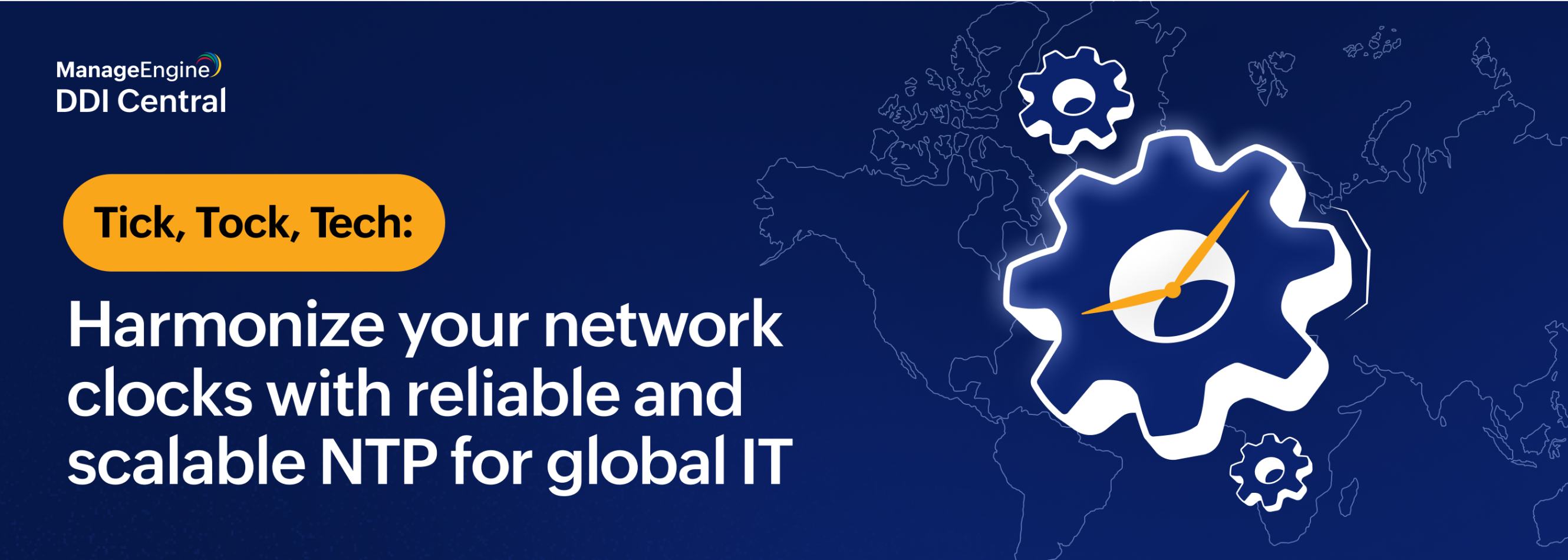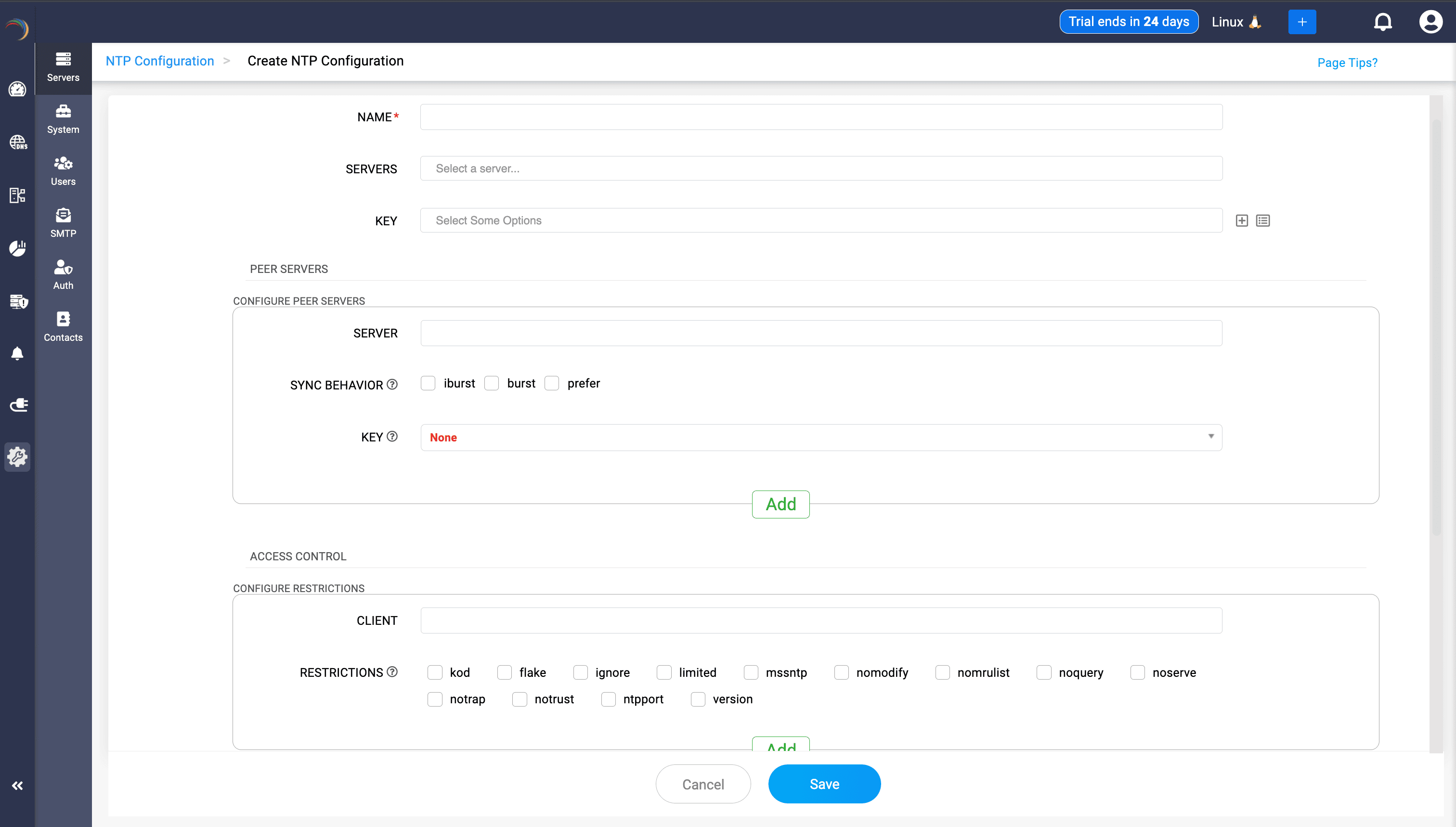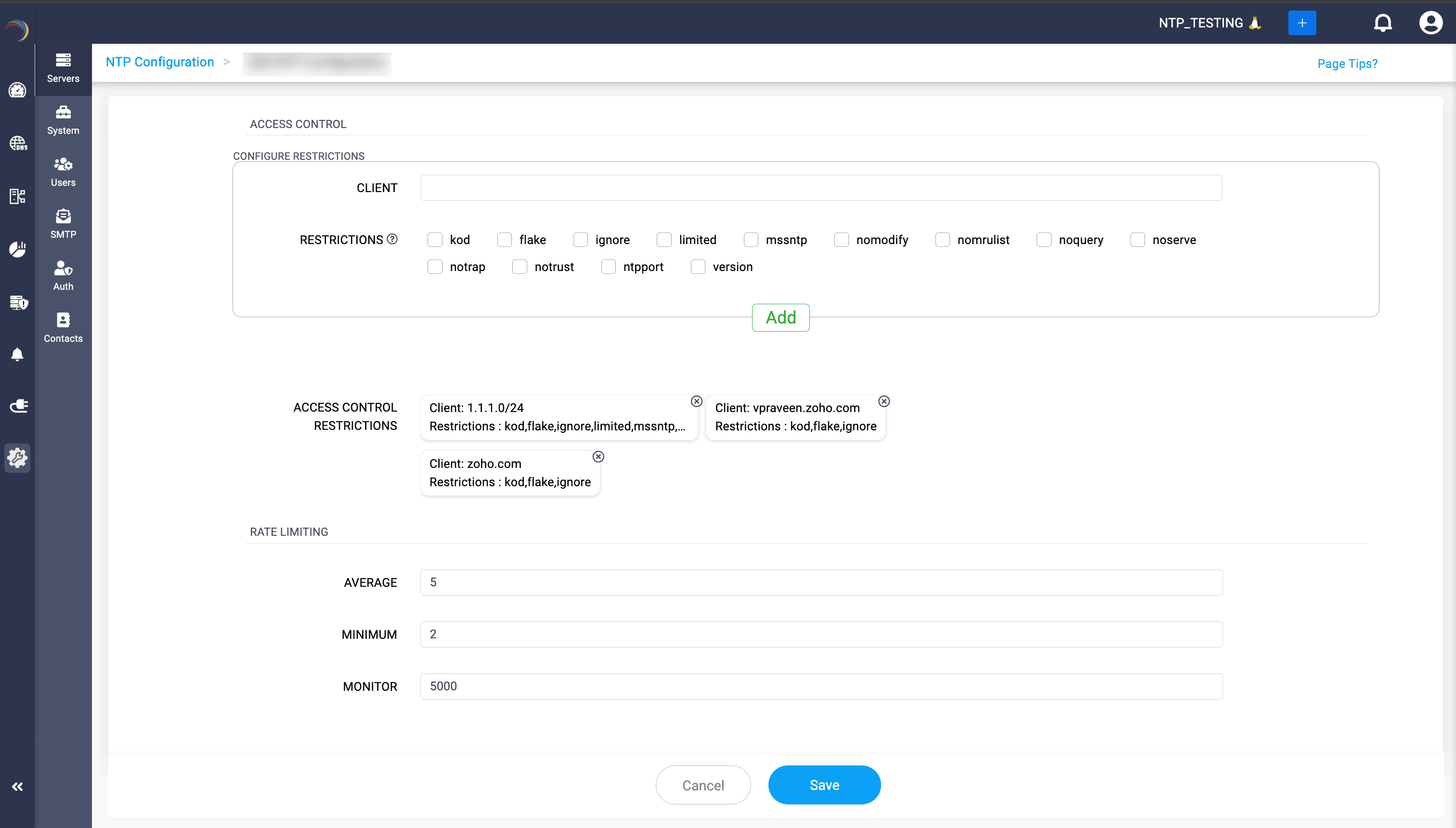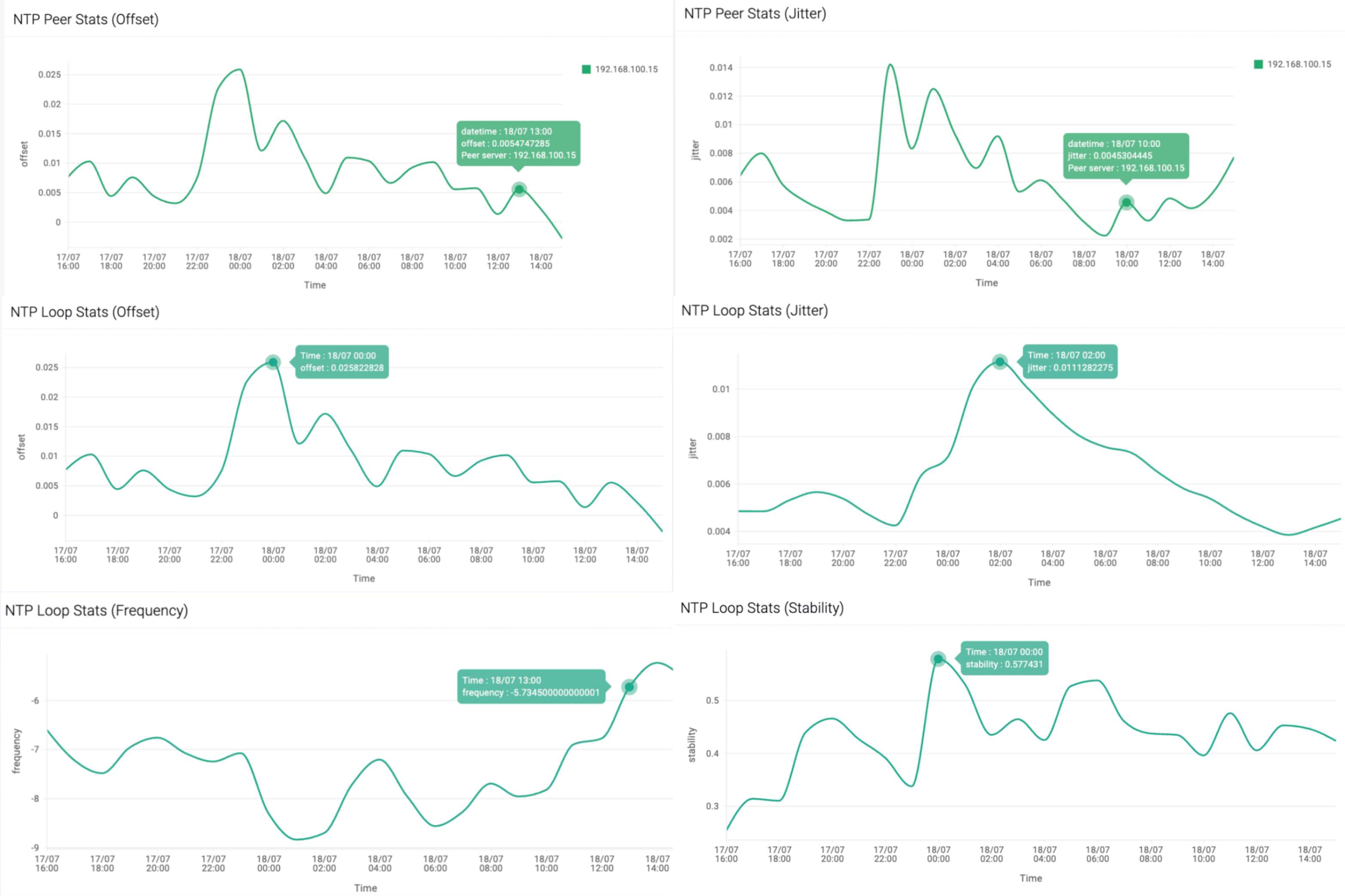What is Network Time Protocol (NTP)? How DDI Central simplifies NTP server configuration

In a world built on data, timing is everything. From financial transactions and secure communications to troubleshooting complex network issues, the precise order of events is not just important—it's fundamental. A discrepancy of a few milliseconds can be the difference between a successful database write and data corruption, or a valid security certificate and a connection failure. This critical need for synchronized time across distributed systems is why the global Network Time Protocol (NTP) Server market size was valued at almost USD 680 million in 2024, and is forecast to increase by more than 75% to USD 1.2 billion by 2032, a CAGR of about 7.2%, according to an industry analysis by the Market Research Community.
At the heart of this global timekeeping effort lies a robust, unassuming, yet essential protocol: the NTP. This guide will demystify NTP, exploring how it works, why it matters, and how you can implement it via ManageEngine DDI Central to ensure your digital infrastructure operates in perfect temporal harmony.
What is NTP?
Network Time Protocol is the technology that keeps all your devices—from core DNS and DHCP servers to endpoints—marching to the same digital rhythm. It works through a hierarchy of “stratum levels,” where top-tier reference clocks (like atomic or GPS sources) feed time down to NTP servers, which in turn synchronize all connected systems.
In a large network, this orchestration ensures that every transaction, log, and query is stamped with the exact same moment in time. In DDI Central, NTP synchronization becomes more than a background service—it becomes a foundation for security, reliability, and compliance.
Accurate logs and audits: Time-aligned events simplify troubleshooting and compliance tracking.
Operational consistency: Prevents service overlaps and conflicts between DNS and DHCP servers.
Security and authentication: Supports time-sensitive protocols like Domain Name System Security Extensions and Kerberos.
Faster incident correlation: Makes it easy to trace cause and effect across multiple systems.
When it comes to time synchronization, accuracy is non-negotiable—but configuration doesn’t have to be complicated. DDI Central transforms what is traditionally a command-line, text-driven, error-prone process into an intuitive, policy-driven experience. By centralizing NTP configuration within its unified interface, DDI Central empowers network administrators to bring structure, visibility, and control to one of the most critical (and often overlooked) aspects of infrastructure management—timekeeping.
Set it and sync it: How DDI Central brings precision and ease to NTP Server configuration
Here’s how DDI Central simplifies every step of NTP configuration and management:

1. Visual and structured configuration: From scripts to strategy
Traditional NTP setup requires manual edits to configuration files, leaving room for syntax errors and inconsistencies. DDI Central replaces this with a visual, guided workflow that enables administrators to define NTP servers, peers, and rules directly through the management console. It turns what used to be a system-level task into a strategic network policy, ensuring uniformity across all environments—from data centers to distributed branch networks. This simplifies configuration, reduces human error, and accelerates deployment while ensuring consistency across multiple NTP nodes.
2. Unified management for DNS, DHCP, and NTP
Within the same Servers pane where admins manage DNS and DHCP nodes, NTP synchronization can be enabled or linked in seconds. This unification means every critical network service—addressing, resolution, and timing—can now be managed cohesively. This eliminates tool fragmentation and siloed configuration, giving admins a single source of truth for network service coordination.
3. Fine-tuned synchronization control
Through the Create NTP Configuration interface, admins can easily add peer servers and define how synchronization behaves using options like iburst, burst, and prefer. These controls let you optimize synchronization speed, accuracy, and priority—ensuring that time updates are both fast and reliable. This enables intelligent performance tuning, helping maintain stability even under variable network latency or multi-peer configurations.
4. Built-in cryptographic authentication
Security is at the core of DDI Central’s NTP configuration. Admins can generate and assign authentication keys directly in the console using cryptographic algorithms like MD5, SHA256, or SHA512. These keys ensure that only trusted sources can provide time updates to your infrastructure. Protects your network from spoofed or rogue NTP responses—fortifying time synchronization against tampering and manipulator-in-the-middle attacks.
5. Granular access controls and restrictions

DDI Central provides fine-grained access control by specifying which clients, IP ranges, or domains can communicate with NTP servers. Restrictions such as nomodify, notrust, Kiss-of-Death (kod), and others help you enforce boundaries without compromising performance. This puts administrators in complete control over who can query, synchronize, or modify configurations—minimizing the attack surface and unauthorized changes.
6. Rate limiting and abuse prevention
With built-in rate limiting, admins can define average and minimum packet thresholds to prevent abuse, flooding, or excessive synchronization requests. This keeps NTP servers responsive and efficient, even in demanding or misconfigured network conditions. This enhances stability and ensures predictable performance, especially in large enterprise environments or during transient network surges.
7. Transparent management and auditability
Every NTP configuration, from peer definitions to access rules, is visually summarized in one dashboard. This holistic view means administrators no longer need to track multiple files or command outputs. Every change is traceable, auditable, and easy to review. This improves operational transparency and governance—crucial for compliance, troubleshooting, and long-term maintainability.
Simplify operations with DDI Central
Configuring NTP servers in DDI Central is more than just a UI convenience—it’s a shift in how network time is governed. By combining intuitive design, integrated security, and full visibility, DDI Central enables network teams to maintain synchronization precision while dramatically simplifying operations.
It’s time management made modern—accurate, secure, and effortless.
Precision in every pulse: Visualizing NTP health with DDI Central’s NTP stats dashboard

In large-scale networks, even a few milliseconds of time drift can ripple into authentication failures, data mismatches, and costly downtime. NTP servers act as the silent metronomes of digital infrastructure—keeping every device, log, and transaction in harmony. But how do you know when your timekeepers start to fall out of sync?
That’s where DDI Central’s NTP Stats Dashboard comes in. Designed for precision-driven network teams, this dashboard displays a live, visual narrative of how well your onboarded NTP servers are maintaining synchronization across your environment. From a single pane, administrators can track key performance indicators like offset, jitter, frequency, and stability—critical metrics that reveal the pulse of your time synchronization network.
Each graph tells a part of the story. The NTP Peer Stats visualize the relationship between your server and its configured peers, flagging anomalies such as high latency, excessive query jitter, or clock drift. Meanwhile, NTP Loop Stats dig deeper, exposing how the server’s internal clock behaves—whether it’s running too fast, too slow, or struggling to maintain stability over time. Together, they help admins detect underlying issues in hardware, software, or network connectivity long before they escalate into outages or log inconsistencies.
By integrating these insights into a cohesive dashboard, DDI Central transforms raw timing data into actionable intelligence. Administrators no longer have to parse through loopstats logs or command-line outputs; instead, they can visually correlate trends, compare offsets, and instantly spot irregularities that signal deeper system imbalances.
And because time accuracy is a security issue as much as it is an operational one, DDI Central’s NTP monitoring also complements its broader DDI ecosystem—ensuring DNS, DHCP, and IPAM services operate with precise temporal alignment. The result? A network that doesn’t just stay online, but stays in rhythm.
With DDI Central’s NTP Stats Dashboard, every pulse of time becomes measurable, manageable, and meaningful—empowering IT teams to maintain the one resource no system can afford to lose: synchronization.
Best practices for deploying NTP servers via DDI Central
Once your NTP servers are configured in DDI Central, it’s essential to maintain their accuracy, reliability, and security. Even small time drifts can disrupt DNS, DHCP, authentication, and logging processes. Follow these quick best practices to keep your synchronization flawless:
Use multiple reliable NTP sources: Configure at least three to four trusted peer servers synchronizing with each other from different networks or stratum levels to ensure redundancy and continuous synchronization.
Enable Authenticated NTP communication: Generate and apply cryptographic keys within DDI Central to protect against spoofed or malicious time updates.
Align Stratum Levels thoughtfully: Build a clean NTP hierarchy by linking internal servers to stable external Stratum 1 or 2 sources, avoiding circular time dependencies.
Apply smart access controls and restrictions wisely: Use DDI Central’s granular restrictions (nomodify, notrust, kod) to limit who can query or modify your NTP servers and prevent unauthorized access.
Set rate limits for stability: Configure rate-limiting thresholds to prevent time request floods or misuse, keeping NTP servers responsive even under high traffic.
Monitor NTP performance metrics continuously: Track offset, jitter, and stability in real time via DDI Central’s NTP Stats Dashboard to detect drifts or anomalies early.
Keep DNS, DHCP and NTP in sync: Synchronize all DNS and DHCP servers with a common NTP configuration to ensure consistent timestamps and seamless event correlation.
Test, validate and audit regularly: Run periodic health checks, review logs, and export configuration snapshots for easier troubleshooting, compliance, and rollback.
By following these best practices, network administrators can keep every service in perfect rhythm—ensuring accuracy, reliability, and operational harmony across their infrastructure with DDI Central.
The precision timekeeper empowering modern networks and their admins
For network managers and system administrators, this isn’t just about configuring an NTP server—it’s about owning network time. With DDI Central, you don’t need separate tools or complex command-line setups. Everything—configuration, synchronization, monitoring, and auditing—happens inside a unified DNS, DHCP, and IPAM (DDI) ecosystem.
By managing NTP utilizing the DDI Central solution admins can:
Eliminate configuration mismatches and clock drift.
Strengthen audit accuracy and compliance posture.
Reduce troubleshooting time for time-related failures.
Ensure every service in the network speaks the same “second.”
Time is the backbone of trust
In today’s distributed and hybrid networks, precise time synchronization is the unseen glue that holds systems together. With DDI Central, administrators finally gain an effortless, secure, and data-driven way to manage NTP servers—ensuring that every DNS lookup, DHCP lease, and system log depends on precise, coordinated timing. This powerful solution provides administrators with a single, intuitive platform to configure, monitor, and secure NTP servers—ensuring that every second in your network ticks in perfect harmony.
Whether you’re managing a handful of core servers or a globally distributed infrastructure, DDI Central makes NTP management easy, flexible, and secure. From setting up peer associations and access controls to visualizing real-time NTP performance metrics, everything is streamlined under one unified console.
Get started today! Explore on your own through a 30-day free trialor schedule a personalized demo to see how effortlessly DDI Central can help you bring precision, reliability, and control to your time synchronization network. Take command of your network’s clock. With DDI Central, accurate timekeeping is just a few clicks away.